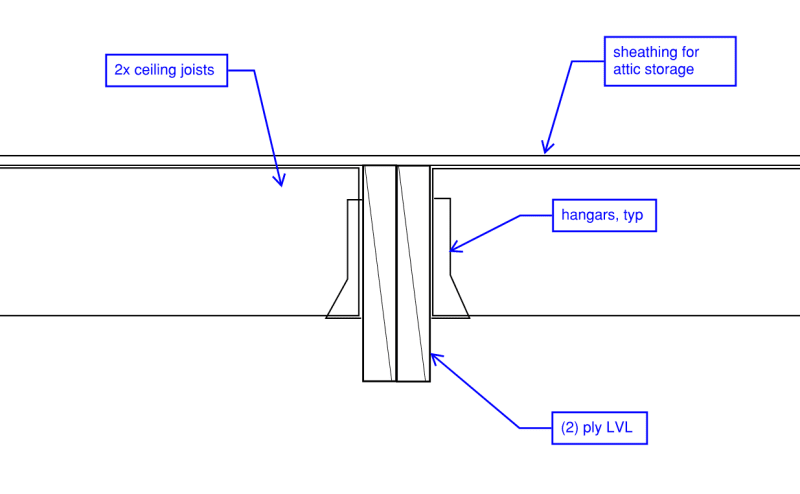TRAK.Structural
Structural
I have a traditionally stick framed gable roof system (rafters with ceiling joists) and need to put in a semi-flush beam to add storage capacity in the attic space. I think one can reason that the tension in the ceiling joists can be transferred through the sheathing on top but that would require that sheets be continuous over the beam.
1. I think some light gage straps are a prudent requirement on top of the joists and going over the beam to transfer the tension. Has anyone done that before, or a different way?
2. Part of me also wants to tie the bottom sides of the joists together across the beam but this seems more difficult due to the beam depth being greater than the joists. Anyone have any ideas how to do this, maybe a twist strap? Is tying the bottoms together overkill here?

1. I think some light gage straps are a prudent requirement on top of the joists and going over the beam to transfer the tension. Has anyone done that before, or a different way?
2. Part of me also wants to tie the bottom sides of the joists together across the beam but this seems more difficult due to the beam depth being greater than the joists. Anyone have any ideas how to do this, maybe a twist strap? Is tying the bottoms together overkill here?

